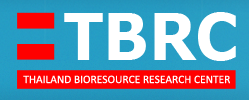Aschersonia phthiurioides P. Henn., Hedwigia 145 (1902)
Teleomorph state: Moelleriella mollii (Koord.) P. Chaverri, M. Liu & K.T. Hodge
Description:Specimens were found on the underside of mostly dicotyledonous or monocotyledonous leaves of forest plants. Hosts are whiteflies (Aleyrodidae). Stromata usually very flattened to scutate undulating due to immersed perithecia with projecting pale to dark brown ostioles, sometimes with a byssoid margin, hypothallus absent, 2-7 mm diam., 0.5-1.5 mm high, white to grayish (especially in older specimens); conidiomata pycnidial, columnar, erect, elongated flask-shaped, arising from the center of the stromata, sometimes convoluted at base, ca. 500-550 µm long (up to 300 m), ca. 150-250 µm wide, cream to pale brown orifices; paraphyses present, linear up to 100 m long; conidiogenous cell ca. 25 µm long; conidia fusoid with ends tapering, 12.5-17.5 x 1-1.5 µm (8-14 x 1-1.5). This species is commonly found in Thailand and often with large numbers of stromata on a single leaf. In such cases the stromata can join and overlap hence the epithet - confluens. The conidia of Thai specimens are longer and wider than those described by Petch (1921). This can be easily isolated on PDA either from the Aschersonia state or from the discharge of ascospores. Colonies will grow to 10-15 mm in 4-6 wk and produce cream masses of conidia. The species was discussed by Petch (1921) and later by Mains (1959). It is present throughout the Indian sub-continent region and has recently been recorded from Queensland, Australia (Hywel-Jones, unpubl. obs.). The Aschersonia and Moelleriella states have been recorded throughout the year in Thailand. Although most often found in the Aschersonia state the Moelleriella state can also be found either completely on its own or in the same collection as the anamorph. There are also examples of the anamorph and teleomorph present in the same stroma. Collections have been made from the far south of Hala Bala National Park and as far north as Doi Inthanon National Park. Collections have been made from sea level to about 1800 meters elevation. Most collections have been from dicotyledonous plants with a few from monocotyledonous plants including Zingiberaceae (often in association with Hypocrella discoidea), Palmaceae and Bambusae.
References:Mains, E.B. (1959). North American species of Aschersonia parasitic on Aleyrodidae. Journal of Insect Pathology 1: 43-47. Petch, T. (1921). Studies in entomogenous fungi: II. The genera Hypocrella and Aschersonia. Annals of the Royal Botanic Gardens Peredinaya 7: 167-278.
Search this species at:
THAILAND BIORESOURCE RESEARCH CENTER

